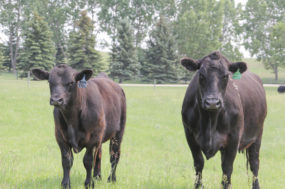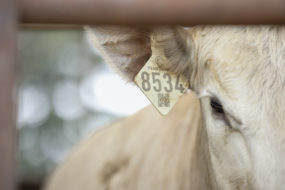My dad’s family relied heavily on true horse power and teamwork to help provide a living for the family. Dad had the ability to remember the names of every horse, their personalities and their contributions – as each horse had different characteristics to offer to the team.
When agriculture became more mechanized, and farm work no longer was done with horses, as a teenager my association with teams of horses was watching some of North America’s top heavy horse teams consisting of Percherons, Clydesdales and Belgians, compete at our regional agricultural fair.
Watching the teams perform was remarkable. Each and every step by every horse had to be in sync for the team to successfully pull the wagon and do the performances required by the judges. They had to change gait, back up, make turns and other challenging tasks. The experienced horse trainer at the reins of these large teams, totaling six or eight horses, had to know what each horse’s ability and contribution was to the overall team.
Several years ago, the Montana Stockgrowers Association presented a poster for sale (see picture) called “Team Work” by Dave Hodges. This poster hangs in my office as a reminder of how important it is to be a productive member of a team and brings back memories of seeing those skilled horsemen exemplify teamwork with a team of horses.
Five elements of strong teams
Gallup, an American research-based company well-known for its public opinion polls, has studied leadership teams for more than four decades and identified “what strong teams of people have in common.”
If you are involved in a team, which may include an organization or a sub-committee of an organization, an animal health processing team at a feedlot, a family in a multi-generational family farm operation or an employee team for a ranch, as you develop or participate in a team, keep these five elements in mind:
1. Conflict will not destroy teams because strong teams focus on results.
Successful teams are not always the ones that get along all the time. Conflict at a level of healthy debate can widen the scope of the team, and even more heated conflict can strengthen a team so long as the team stays focused on the end results.
Discussion and debate can be productive, but if the team shatters over conflict, there no longer will be a team to produce results.
2. Strong teams prioritize what’s best for their (organization) and move forward.
Note: Organization can be substituted with the word that best fits your setting, such as family, committee, management team, etc.
Successful teams keep their goal at the forefront, putting what’s best for their organization ahead of individual goals and ideas. Teams will fail if individuals can’t put the goal of the organization ahead of their own personal goals or ego, whereas individuals of strong teams who rally and support one another and the organization will see success.
3. Members of strong teams have a balance of work and personal life.
Being a team member can be demanding and time-consuming. This will vary depending on the mission of the team and end goal. Gallup’s research concluded the best teams – with the most productive team members – consisted of members who worked hard and long hours to reach the goal, and this focus and dedication noticeably carried over to how they managed their personal lives.
Devoted team members carried this devotion and energy to their families and communities, making time for these important personal elements as well.
4. Diversity is embraced by strong teams.
As mentioned earlier, each horse on a team is unique, and each has a different role to conduct when pulling the wagon. Gallup studied leadership teams at some of the world’s most innovative and successful companies, and they realized teams composed of people who were very similar in areas such as education, experience, viewpoints and personalities were actually not the productive teams in the end. They were too much alike.
Teams with diversity in these areas, and even age, gender and cultural backgrounds, were more productive. This was especially true when the team valued the strengths of their diversity.
5. Strong teams are magnets for talent.
How do you find a strong team? Look for the team everyone wants to be a member of. Strong teams draw people to be members. Even if the members work long hours, individuals want to be on a team that gets things done, a team where an individual can contribute and grow in their leadership abilities.
In summary, having the right people on the team is important, but in order for the team to continue to grow and achieve their goals, the role of the team leader is to invest time in knowing each individual’s strengths and focus on building relationships across the team members, just like the skilled horsemen understood the abilities and skills of each horse on the team. ![]()
PHOTO: The painting ‘Team Work’ by Dave Hodges is a good example of collective effort and talent. Photo of original oil painting courtesy of Dave Hodges, hodgesfineart.com

-
B. Lynn Gordon
- Teaching Learning and Leadership
- College of Agricultural and Biological Sciences and College of Education
- South Dakota State University
- Email B. Lynn Gordon








